Hey, did you hear about the PUBG vs Fortnite legal case getting withdrawn? Boy, that thing was a complete disaster, huh? But ours is an industry filled with legal shenanigans… many of which, like Capcom v. Data East, Silicon Knights v. Epic, and now this, have ended disastrously for the plaintiffs.
However, it’s not always like this. We only really see these cases from a Western perspective — and, indeed, many of the most important legal cases in gaming, like the infamous Tetris debacle, were decided in US court. But there have also been plenty of legal issues surrounding games in Japan — see the recent spate of game bar closures — and one Japanese company is quite notorious for its use of litigation.
Long before #FucKonami was a trending hashtag, long before Western music game fans and developers cowered in fear of Konami’s legal threats, there were incidents in Japan involving one of Konami’s most popular (at the time) game franchises. These incidents earned Konami a great deal of notoriety among game fans in Japan as a litigation-happy tiger of a company that would happily devour its own fanbase. Somehow, though, these stories never drifted overseas, likely because the game involved was seen by the west as “some weird Japanese dating sim thing” that was of little interest or importance.
It’s time to change that. It’s time to take a look at Konami’s legal actions against one of its most fervent fanbases. Let’s examine Konami’s legal battle against Tokimeki Memorial fandom.
Before we start, perhaps it’s best to talk a bit about what Tokimeki Memorial (frequently abbreviated as Tokimemo) was, and why it was such a big deal.
Tokimemo is considered to be one of the defining “Gal-ge,” or games centered around fostering and nuturing a relationship with one of several eligible virtual women. In this game, you play as a high school boy going through the school year, meeting various girls and finding one you eventually want to win over. By paying attention to the girl’s likes and what she wants in a partner, you budget your time and raise stats to become more appealing. You also have to make sure not to annoy any of the other girls, because they’re catty bitches who will spread damaging rumors about you. Eventually, you’ll reach the end of the school year, where one of the girls — hopefully, the one you were aiming for — confesses her love for you under the tree of legend.
(If you want a slightly more in-depth and fun look at the gameplay, I’d highly recommend the Game Center CX episode centered around the game.)
Tokimeki Memorial did well when it debuted on the PC Engine CD in 1994, but it was the eventual enhanced ports to PlayStation and Saturn that really made the game blow up in popularity. Shiori Fujisaki, the pink-haired girl-next-door archetype on the PS and Saturn covers, became an instantly recognizable face across all of gaming. Konami had a huge hit on their hands, and merchandised the everloving hell out of it: to this day, you can wander into any Japanese secondhand stuff store and likely find various Tokimemo knickknacks.
Of course, with a hit game comes sequels and spinoffs, and they were numerous. The first sequel, Tokimeki Memorial 2, was a huge game spread across five CDs, and is widely considered the best in the franchise in terms of gameplay and presentation… yet it didn’t stick around in gamers’ hearts like the first game did. A disastrous move to 3D visuals on PS3 with Tokimemo 3 upset many, and Konami opted to focus instead on the growing otome market with Tokimeki Memorial Girls’ Side, which had you playing as a girl trying to impress a bevy of hot dudes. The last Tokimeki Memorial game, Tokimeki Memorial 4, released on PSP in 2009, and its very existence seemed like a surprise to many.
(A fun fact shared to me by my late friend Andrew Fitch — who formerly worked at Konami’s US branch — was that the weird PSP game Brooktown High was meant as a testbed to see if an “American Tokimemo” would work. We miss you, Andrew.)
Since then, Konami hasn’t done much with the series, aside from putting out the occasional bit of Girls’ Side content. Love Plus on the 3DS was seen by many as an evolution of the game’s concepts, though Konami basically destroyed that series as well. Currently, there’s a game called “Tokimeki Idol” on smartphones that looks like a really bad attempt to cash in on the Idolm@ster/Love Live! wave by using scraps of an old IP. The decline of Tokimemo itself is worthy of its own article, as it’s due to a variety of factors, but one thing that may have played a part was Konami’s antagonism of its own fanbase through legal means. Such as…
The Memory Card Incident
PlayStation Memory Cards were a unique innovation in game save data storage. Previously, save data was confined to a specific cartridge or a console, and expansion (such as the Mega-CD and Saturn cartridges) was rather pricey. Not so with Memory Cards: they were cheap, portable, and allowed you to carry save data over from one system to another.
They were also very, very easy to hack if you had the right equipment and know-how, meaning you could alter game save data to your liking. People who had the skills and tools to do this in Japan offered underground services to modify save data for hot games, allowing people to max out their stats, go straight to the ending, and access all of a game’s unlockable content.
Unlicensed memory cards were also a thing: anyone who has had 100 hours of Final Fantasy Tactics erased by a faulty InterAct card certainly remembers how common they were. One company called GameTech, a division of a larger firm called Spec Computer Corporation, decided to try and sell some unlicensed memory cards with a twist: these cards would come pre-packed with god-tier save data for hot titles.
See that box with the badass chain-smoking wolf on it? That’s the X-Terminator, one such memory card that came with preloaded data. Two of these were released: one with a bunch of saves for early PSOne games, and another that was specifically for Tokimemo, which is what you’re seeing above. It advertises access to maxed-out stats, the ability to see all the endings, and unlocking everything in the game’s gallery mode. Perfect for somebody who doesn’t want to be disappointed after pouring hours into trying to win over a girl, right?
Well, Konami sure as hell didn’t like it, and immediately sued the shit out of Spec Computer, demanding the product be taken off the market and damages be paid. Their reasoning? Here’s the argument straight from the legal document:
The essential quality of “the right to preserve the integrity of a work” as an author’s moral (personal) right lies in the inviolability of “the integrity of … a work in its contents” when it is made available to the public for their utilization. It is to be distinguished from the essential quality of a copyright as a property right in that the latter forbids an unauthorized utilization of a work by a non-copyright-holder. In considering a violation of the right to preserve the integrity of a work, therefore, we have to review a whole series of processes of making the work available to the general public for their utilization and to inquire at what stage an act was done to impair “the integrity of the work in its contents.” Konami v Spec Computer
I know that’s a bit hard to parse, but it’s basically an argument similar to Nintendo’s when they sued Galoob over the Game Genie: that the act of altering game data, even for personal use, creates a derivative work and infringes upon a company’s right to create their own derivative works of their IP. By giving players access to modified save data, Spec Computer was willingly infringing on the integrity of the game and its intended means of progression as created by Konami.
Given that Nintendo got their ass handed to them every time they tried to sue over things like game rentals and game modifiers in the US, and that those decisions have been used in similar cases involving personal modifications of pre-existing media, it would seem like Konami’s case was pretty flimsy. Unlike in the Game Genie case, it wasn’t even the game code being modified: it was outside data stored on a memory card, which makes the whole infringement argument seem even less viable.
You would think that, but remember: Nintendo lost their case in the US — copyright in Japan is something else entirely. And guess what? Konami actually won. Twice, in fact: once on the original case, and again through the dismissal of Spec Computer’s appeal. You can read through the court document translations yourself, but I think the most pertinent part is this:
Since it is the case that the images in the Game Software creatively express ideas and emotions and fall within the scope of literature, science, fine art and music, and can be said to constitute a copyrighted work as provided in Article 2 Section 1 item 1 of the Copyright Act, under the factual relationship set forth above it is proper to find that the use of the Memory Card altered the Game Software and infringed the right to preserve the identity of the work held by the Appellee. Presumably, since the Parameters in the Game Software allow expression of the character image of the protagonist, and since development of the story corresponds to changes in that character, through the use of the Memory Card the character image of the hero as expressed by means of the Parameters set in the Game Software is altered. As a result, the story in the Game Software is developed beyond the scope originally planned, causing a change in the story.Tokimeki Memorial Case
Yeah, it’s basically the opposite of what the US court found in the case of Galoob:
A derivative work, the court explained, must incorporate the original work in some “concrete or permanent ‘form.’” The court said the Game Genie does not contain, produce, or duplicate the original game in any lasting form. The court also made arguments about the importance of allowing freedom to innovate, comparing the Game Genie to the important innovation of spell-checkers that enhanced existing word processor programs. A finding of copyright infringement in this case, the court warned, might chill innovation and fail to protect society’s interest in the free flow of ideas, information, and commerce. Lewis Galoob Toys, Inc. v. Nintendo of America, Inc.
So Spec Computer had to pay damages. Fortunately, not many of the memory cards had been sold, so it didn’t sting them too much — in fact, GameTech and Spec Computer are still around and selling stuff like Switch carrying cases to this day. The real issue is the repercussions of this: something so simple as increasing a stat number beyond what developers intended at a certain point in a game was now considered infringement. Weirdly, however, this judgement didn’t seem to affect the sales of game enhancement devices in Japan much — mostly because they were never really “mainstream” to begin with and only sold at very specialized game stores. I was seeing Japanese editions of the Pro Action Replay for sale up through the PS2 era, just before memory cards died out with the PS3.
As interesting as that case is, there’s another, more salacious incident that had a much more direct impact on fans at the time. It was a grim reminder that, at any time, a company could target fanworks and destroy what they had built.
The Adult Anime Incident
The world of doujin encompasses a lot more than just comics: it involves software, music, crafts, cosplay, and much more. In the mid-late 90s, one emerging area of doujin creations was independently made animation. Aspiring animators created short films and offered them for sale — usually on VHS — at gatherings like Comic Market and at specialty doujin consignment shops. This was well before software like Flash made animation significantly easier, so creating your own hand-drawn-and-inked anime was often a fair bit of work.
And, as you might expect from the mid/late-90s doujin scene, several of these indie anime features were pornographic parodies based on pre-existing content. If you remember seeing VHS bootlegs of Evangelion and Rayearth hentai in comic con dealer rooms during the late 90s, they were rips of doujin anime somebody made.
One such anime was a ten-minute featurette called “Dogimagi Imagination.” While the name was different, the material the animation team was, uh, “inspired” by was pretty obvious.
(Sorry for the poor image quality, it’s hard to even find a cover image of this thing online. At least they pre-censored the naughty bits on the back for me!)
Yup, that definitely looks like Shiori Fujisaki, and she appears to be, uh… doing things. I have no idea what the actual content of the video is, or how far it goes — while I take pride in being very thorough in my research, I draw the line at wading through malware-infested Japanese porn torrent sites to find a rip of a likely poorly animated 10 minute sex video.
Copies of this anime were sold at various doujin events and at the late, great Akihabara gaming subculture institution Messe Sanoh. It first went on sale in early January of 1997, and sold somewhere around 900 copies up through the middle of 1998. In other words, compared to the 1.5 million copies the game itself sold, it wasn’t really a huge deal and was only being bought by the most devout fans who knew where to get it.
But, as we game fans all know, the mainstream media will take any opportunity they get to call out something salacious that’s videogame related. Sure enough, in May 1998, about a year and a half after Dogimagi Imagination went on sale, the Japanese magazine Friday ran a story about it entitled “Shocking! Tokimemo’s Shiori Fujisaki ‘performs’ in a video!”
And that’s when the shit hit the fan. Tokimemo wasn’t just an otaku thing — it was a pretty mainstream title at the time, and the public were taken aback at the idea of pure, innocent Shiori drawn by evil, perverted fans being horny on main. The existence of the video was now made known to a much, much bigger audience… including Konami themselves, who immediately took legal action — not just against this tape, but against other Tokimemo doujin efforts as well. (The Japanese Wikipedia article on the incident notes that Konami specifically prevented publication of a book called “Bishoujo Doujin 2 Tokimeki Album” — these unlicensed anthology books, which compiled a lot of stories originally published in doujinshi, were often released by fly-by-night publishers in the mid-90s through the early aughts.)
The case against the Dogimagi Imagination production team was pretty open-and-shut — while they’d taken care to avoid mentioning Tokimeki Memorial or naming the character specifically, it was pretty friggin’ obvious that the character in the film was meant to be Shiori. As a result, the courts found in Konami’s favor, any remaining tapes (along with the master tape) had to be destroyed, and damages of about 2,270,000 yen were ordered to be paid.
The whole incident left a sour taste in fans’ mouths: along with the memory card thing, it made Konami look like a heartless company willing to quash elements of Tokimemo fandom it didn’t like with a legal hammer. All Tokimemo doujin works, be they completely chaste or deviously dirty, died basically overnight. Doujin animation activity of all kinds came to a screeching halt, and didn’t really start up again until a ways into the aughts. It was a terrifying reminder that the companies holding these properties could shut down any fan activity if they caught wind of it, which put doujin creators on edge about who might be seeing their work. It also emboldened other companies to go after fan works: A year later, Nintendo would have a Pokemon doujinshi artist arrested to essentially “make an example” out of them in a similar incident. (That’s another bit of gaming fandom history I really want to research at some point.)
So there you go: the two big incidents that made many Japanese gamers in the late 90s wary of Konami. Who would have thought it could possibly get worse as the decades passed?
But actually, there might be even more! One page I was looking at for research on this piece, which details a lot of notorious happenings in the doujin subculture of Japan, mentions a “Tokimemo T-Shirt incident.” Try as I might, I couldn’t find anything about this anywhere online, but my curiosity is piqued. If I ever find out more about the Tokimemo T-Shirt Incident, I’ll be sure to update this article. For now, though, I hope you learned a bit about some fascinating pieces of gaming legal history.
Also, FucKonami.
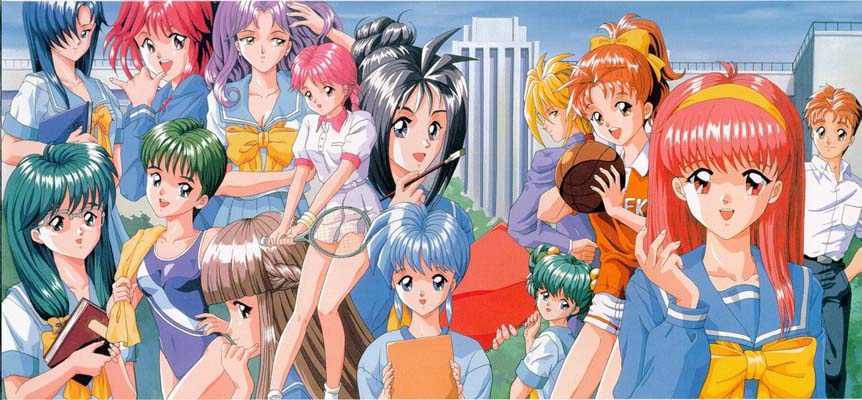
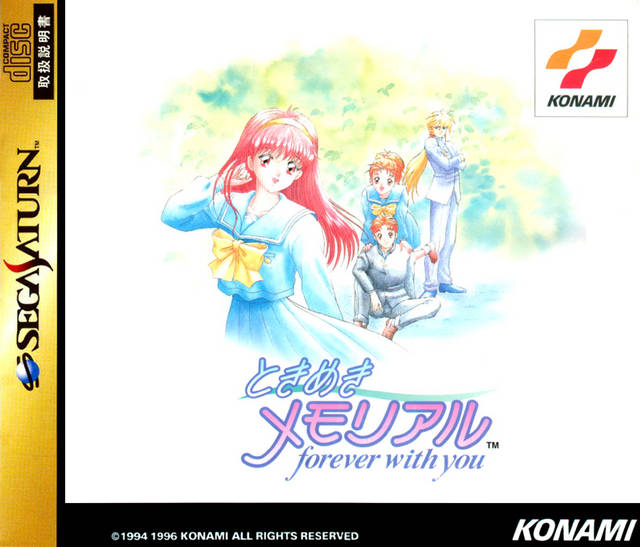
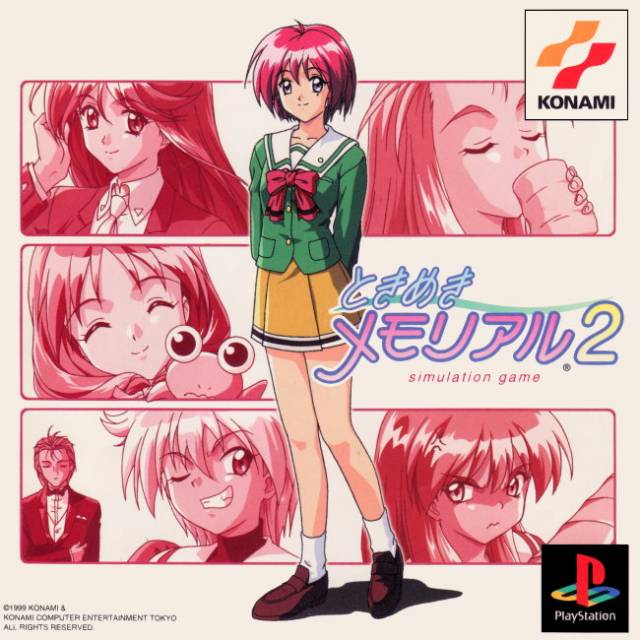
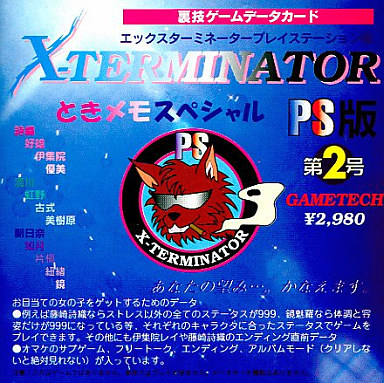
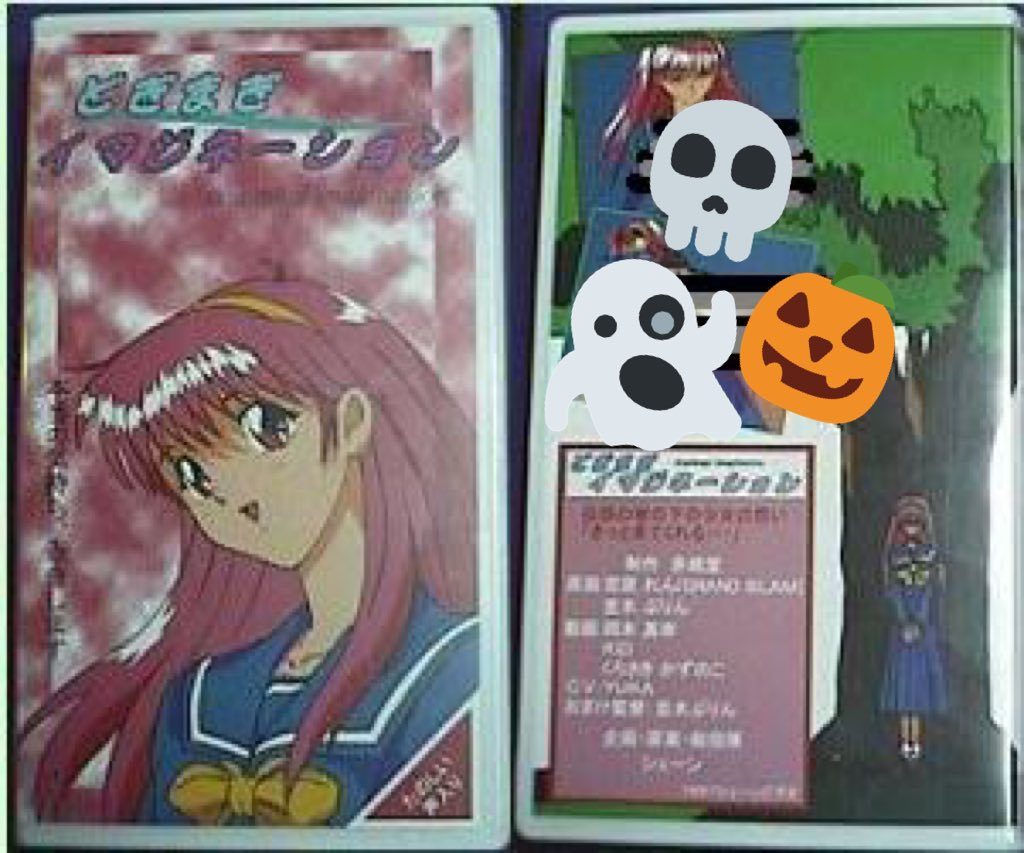
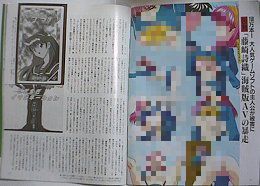
You’re not kidding about the merch: check out the bargain shelves in the CD section of any Book-Off and you can regularly find more than a few (and sometimes a whole row) of Tokimemo-related CDs, a few of which are game soundtracks but most of which were spinoffs like character song singles or drama CDs. However good the games might have been, a lot of the (very plentiful) merch was of poor quality.
– As for the lawsuits, I wonder what kind of pressure Konami may have been feeling that lead them to decide to go ahead with these. Did they think the memory card incident, if left un-litigated, would open the door to worse infractions? Does Japan have that stupid ‘perceived value’ problem with IP, like the US does (where companies kind of have to sue, even over small IP infringement, or else risk never being able to sue over larger cases?) Not that I want to take Konami’s side, but It’d be intersting to examine what influenced them to make these decisions that we now see as so wrong-headed.
– Anyway, thanks for this article, this was really interesting to learn about.
Tokimemo always strikes me as the led in to the rise of Key and VN’s sad how it died
Thanks for the great article! There is surprisingly little English information out there about the Tokimeki series so it was really interesting to read about some of its history in Japan.
Also I think you meant to say “PS2” when you were talking about what platform Tokimeki Memorial 3 was released on, not the PS3.
Well, I guess there’s not much hope of an English version of Tokimeki 2, is there? LParchive got me all interested in the game, hahaha